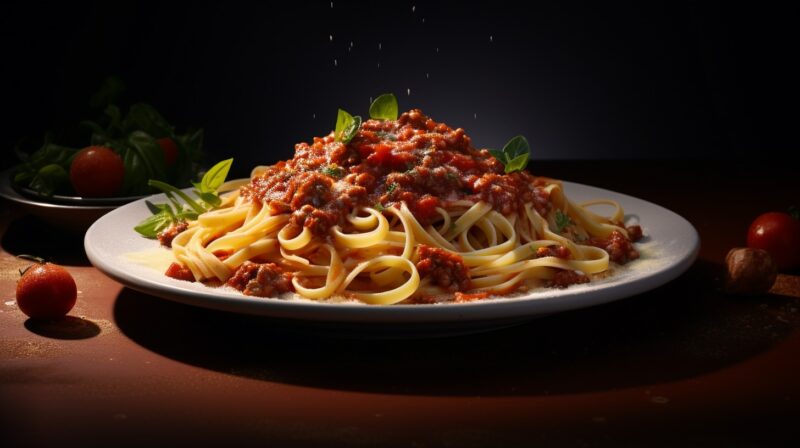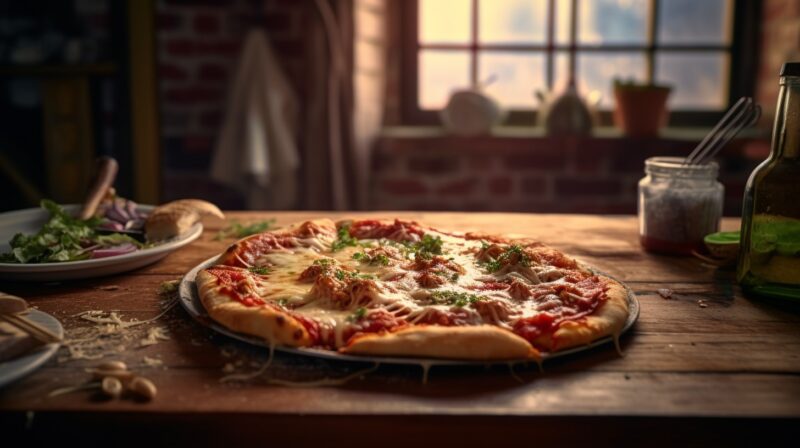Food is more than just sustenance; it’s a reflection of our culture, history, and identity. As we traverse the globe, we discover that certain dishes have not only stood the test of time but have also crossed borders, becoming global favorites. In this article, we’ll delve into the five most popular foods in the world, exploring their origins, significance, and the reasons behind their universal appeal.
1. Pizza: The Universal Delight

Originating from Italy, pizza has become a global phenomenon. Its versatility and delightful combination of flavors make it a favorite for many.
The History of Pizza
Pizza, as we know it today, began its journey in Naples, Italy. The city’s working class needed a quick and affordable meal, leading to the creation of the flatbread topped with tomatoes, cheese, and other local ingredients. The Margherita pizza, named after Queen Margherita of Savoy, is a testament to the dish’s deep-rooted Italian heritage, showcasing the colors of the Italian flag with its tomatoes (red), mozzarella (white), and basil (green).
The Global Spread
From its humble Neapolitan origins, pizza has traveled far and wide. When Italian immigrants moved to the US, they brought with them their cherished culinary traditions. Pizzerias began popping up in cities like New York and Chicago, each adding their unique twist. Today, from the deep-dish pizzas of Chicago to the sushi pizzas of Japan, this dish has been reinvented countless times to suit diverse palates.
2. Rice: The Staple of Continents

Rice is more than just a grain; it’s the lifeblood for many cultures. Serving as a staple food for over half the world’s population, its significance cannot be overstated.
The Cultural Significance
In many Asian cultures, rice is synonymous with food itself. Phrases like “Have you eaten rice today?” are common greetings, emphasizing its importance. Rice plays a central role in festivals, rituals, and ceremonies. For instance, in India, rice is used in religious ceremonies and weddings as a symbol of prosperity and abundance.
The Versatility of Dishes
- Biryani: A fragrant rice dish cooked with spices and meat or vegetables, popular in South Asia.
- Sushi: A Japanese dish that combines vinegared rice with various ingredients such as seafood and vegetables.
- Paella: A Spanish rice dish cooked with saffron, vegetables, and proteins like chicken or seafood.
- Jollof Rice: A West African one-pot dish with rice, tomatoes, onions, and various spices.
Each of these dishes, while rooted in their respective cultures, has found fans across the globe, showcasing rice’s adaptability and universal appeal.
3. Chocolate: The Sweet Seduction

Chocolate, derived from the cacao bean, has been enchanting taste buds for centuries. From ancient rituals to modern desserts, its rich history is as delectable as its taste.
The Ancient Roots
The story of chocolate begins with the ancient Mesoamerican civilizations. The Mayans and Aztecs revered the cacao bean, using it to make a bitter beverage called “xocolātl.” This drink, often mixed with spices, was reserved for the elite and used in sacred ceremonies. The Spanish conquistadors were the first Europeans to encounter cacao, and they brought it back to Europe, where it underwent a sweet transformation.
Journey to Modern Popularity
Europe’s love affair with chocolate began when sugar was added to the bitter cacao concoction. Over time, innovations like milk chocolate and conching (a process that makes chocolate smooth) were introduced. Today, whether it’s in the form of a luxurious truffle, a comforting hot cocoa, or a decadent cake, chocolate is cherished worldwide. Its ability to evoke joy, comfort, and love is unparalleled, making it one of the most beloved foods on the planet.
4. Pasta: The Art of Italian Cuisine

Pasta, with its myriad shapes and forms, is the pride of Italian cuisine. Its simplicity, combined with the magic of sauces and ingredients, has made it a global comfort food.
The Origins of Pasta
While many associate pasta with Italy, its roots can be traced back to ancient civilizations. The Greeks had a dish called “laganon” – flat sheets of dough cut into strips, and the Chinese had noodle-like preparations long before Marco Polo’s travels. However, it was in Italy, particularly in regions like Naples, where pasta evolved into the diverse and delectable forms we know today.
Pasta’s Global Love Affair
- Spaghetti Bolognese: A rich meat sauce served with spaghetti, loved worldwide.
- Pad Thai: A Thai stir-fried noodle dish, incorporating rice noodles with shrimp, tofu, and peanuts.
- Lasagna: Layered pasta sheets with cheese, meat, and sauce, baked to perfection.
- Ramen: Japanese noodle soup with meat or fish broth, flavored with soy or miso.
From the streets of Rome to the bustling lanes of Tokyo, pasta in its various avatars has found a place in every food lover’s heart. Its adaptability allows it to seamlessly blend into various cuisines, making it a global favorite.
5. Bread: The Essence of Civilization

Bread, often referred to as the “staff of life,” has been a fundamental part of human diet for millennia. Its variations reflect the history, culture, and soul of regions around the world.
The Timeless Journey of Bread
Bread’s history is as old as civilization itself. Ancient Egyptians are credited with baking the first leavened bread, a technique that transformed the texture and taste of bread forever. From the flatbreads of the Middle East to the sourdough loaves of San Francisco, bread has been a mirror to the evolution of societies and their culinary practices.
The Many Faces of Bread
- Baguette: A long, thin loaf from France, known for its crisp crust and soft interior.
- Naan: A soft, leavened flatbread from India, typically baked in a tandoor.
- Tortilla: A thin, flat pancake made from maize or wheat flour, essential in Mexican cuisine.
- Pita: A round pocket bread from the Middle East, perfect for stuffing with fillings.
Each type of bread, with its unique flavor and texture, tells a story of its origin, the people who made it, and the traditions it upholds. Bread, in all its forms, is a testament to humanity’s shared history and the simple joys of life.
In Conclusion
The world of food is vast, diverse, and incredibly interconnected. As we’ve journeyed through the five most popular foods, we’ve not only tasted their flavors but also delved into their rich histories and cultural significances. These dishes, from every corner of the globe, remind us of the shared human experiences that transcend borders and languages.
In every grain of rice, slice of bread, or piece of sushi, there’s a story waiting to be told. These foods, which have stood the test of time and have been embraced by countless cultures, are a testament to the universal language of food. They bring people together, evoke memories, and create new ones.
